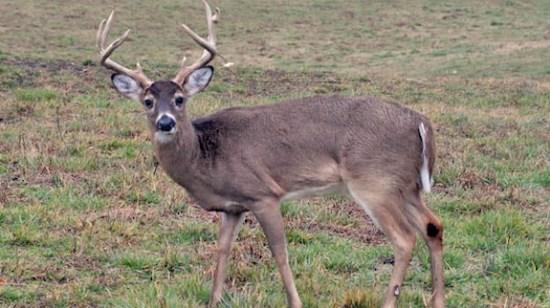Mark and I have both observed that when the rut has really turned on, the older-age-class bucks usually don’t move until later in the morning. In Missouri, the pre-rut and the rut starts kicking-in the first week of November. The bucks will be looking for that first estrous doe that is getting ready to breed. During this time, we want to have our stand set-up in an area where we can get to and from our stand without spooking any deer. When the rut is full-blown, we plan to climb into our stands, often before daylight, and stay in those stands longer than we normally will. We have observed that when the rut is on, there usually will be does and fawns coming by our treestand sites early in the morning, going to their beds. That’s why we like to get in our stands early in the morning before daylight and stay in the stands much later than we generally do. We may have from 5 to 20 does walk past our stands on their way to the bedding area, before a mature buck starts coming down that trail to the bedding area,. During the rut, we’ve found the mature buck is the last deer to come down a trail from a food source to the bedding area. You may see some 2- and 3-year-old bucks that will come down that trail at around 7:00 or 8:00 am. You have to let those younger bucks walk past you and go to the bedding area, if you are going to take a mature buck. Many times we don’t see the older-age-class buck until 10:00 or 11:00 in the morning, during the rut. The real secret to knowing which bucks to let walk past you and which buck to try and take is by studying the pictures you’ve gathered from your trail cameras. Those trail-camera pictures will help you identify the buck you want to try and take and what time he moves during the rut.
Now, let’s talk about when the rut is really in full swing. Most hunters think the rut is the best time to take a mature buck, but Mark and I don’t believe that. Here is why. The mature bucks usually will be locked-down and bedded-down with those first mature does that come into estrus. They may stay with her in thick cover for 3 to 5 days. So, you won’t see him. Many times, a mature buck will take a doe that is coming into estrus to a really obscure spot and stay there with her. For instance, he may be holding with her in a ditch, out on the edge of a major highway or road or in a remote patch of thick cover in deep timber. He doesn’t want other bucks to find her. Usually, the deer you see the most during the rut are 1-1/2- to 3-year-old bucks. The older bucks, the bucks that are 6- or 7-years old, will be locked down with an estrous doe, while the younger bucks are running around looking for an estrous doe. So, as a hunter, I may wait 3 or 4 days during the rut, before that mature buck gets up and goes looking for another estrous doe. You are hoping that you probably will see that mature buck, after he has found and bred the first doe and goes looking for the second doe. However, if he locates that second estrous doe quickly, he once more will move to a remote location, and you will not see him again for 3 or 4 days. Older-age-class bucks are much harder to pattern during the rut, because most of the time they will be with an estrous doe in a remote location where you probably never have seen them previously.
Editor’s Note: Terry Drury, the co-owner with his brother Mark of Drury Outdoors, produces several TV shows, including “Bow Madness,” “Dream Season BioLogic,” and “Drury Outdoors Wildlife Obsession” for the Outdoor Channel and “Natural Born,” which airs on the Pursuit Network, and has been a member of Mossy Oak’s ProStaff since its beginning.
-Terry Drury










